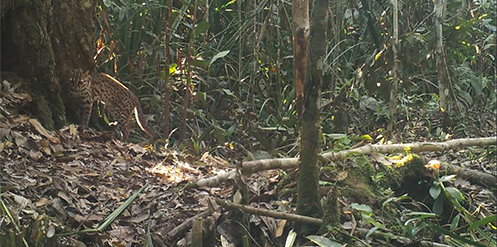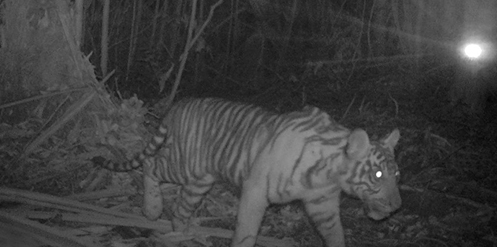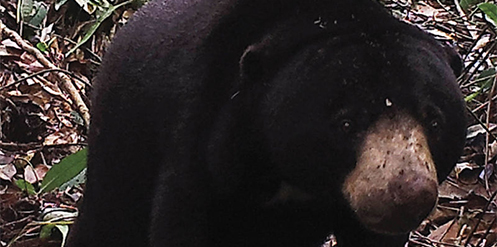May 07, 2018
The latest report from Restorasi Ekosistem Riau (RER) has documented 73 mammal species in the Kampar Peninsula area, including 17 which are listed as globally-threatened by the IUCN.
Compiled by RER technical staff Muhammad Iqbal and Prayitno Goenarto, the Report is an explanatory record of all the mammals recorded in the area as of December 2017.

Out of the 17 threatened species, three species are Endangered (Agile Gibbon, Flat-Headed Cat and Malay Tapir) and two species are Critically Endangered (Sunda Pangolin and Sumatran Tiger).
There are 12 Vulnerable species, including the Sunda Slow Loris, Sunda-Clouded Leopard, Malayan Sun Bear and Sambar Deer, documented in the checklist.

The report also notes that 21 mammal species are protected species by Indonesian law.
“There is not too much information available regarding the mammal species found on the Kampar Peninsula. This data can inform visitors of what they might find if they visit RER and also informs researchers if their particular species of study is present,” Prayitno explained.
The checklist helps to inform academics, scientists, environmental organizations and hobbyists on the distribution of IUCN Red List species for verification or database update purposes, he added.

According to the checklist, there is a large assemblage of squirrel, rat, civet, and bat species in RER. There is also five wild cat species, all of which are notably protected in Indonesia.
As the Kampar Peninsula is almost entirely tropical peatland (where a cubic metre of soil is composed of 90 per cent water and 10 per cent organic solids), large and heavy mammals such as the Sumatran Rhinocerous or Sumatran Elephant are generally prevented from inhabiting the area due to the soft and sinking nature of peat.
However, the Malay Tapir is included in the list as evidence of its presence has been observed in a peatland to mineral soil transition area in the western inland areas (not in deep peat areas of the RER landscape to the east).
Besides IUCN and protected status in Indonesia, each mammal species is also annotated for its general habitat distribution on the Kampar Peninsula and its CITES status, alongside its scientific name and Indonesian name.
It is noted in the publication that information was sourced from biodiversity inventories conducted in partnership with Fauna & Flora International (FFI) Indonesia and Tropenbos Indonesia.
The mammal checklist is the third in RER’s publication series thus far, following last year’s annotated checklist of birds in the Kampar Peninsula.